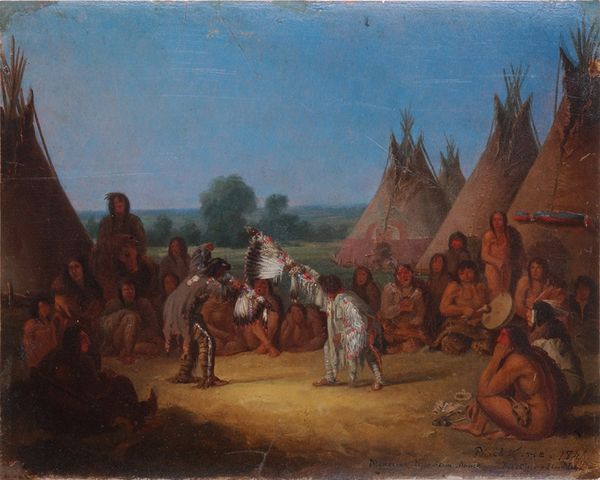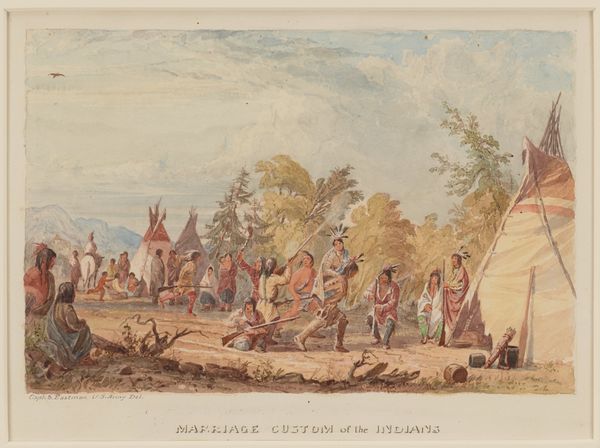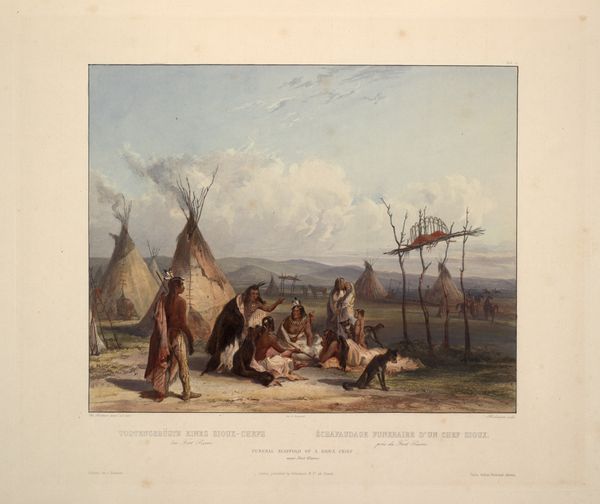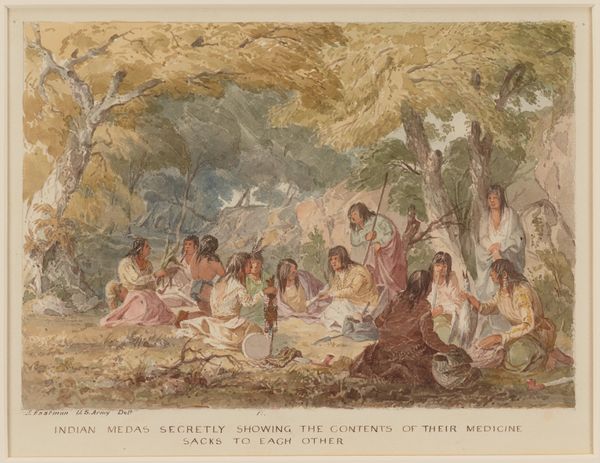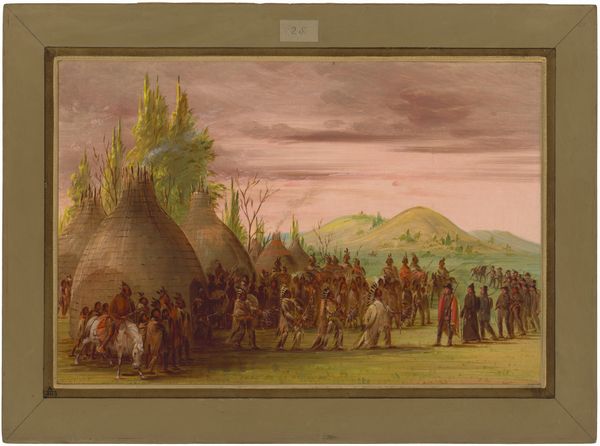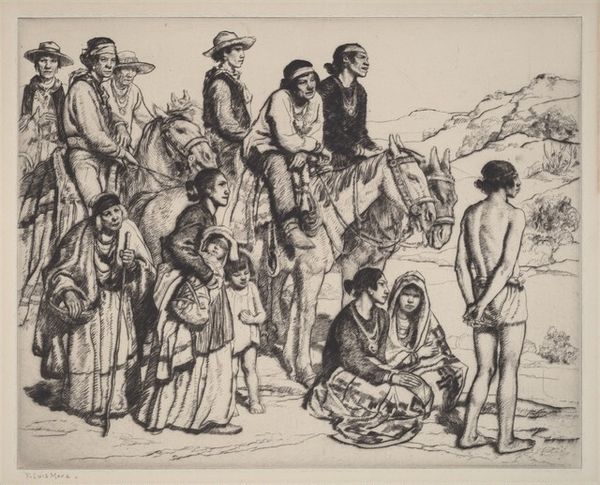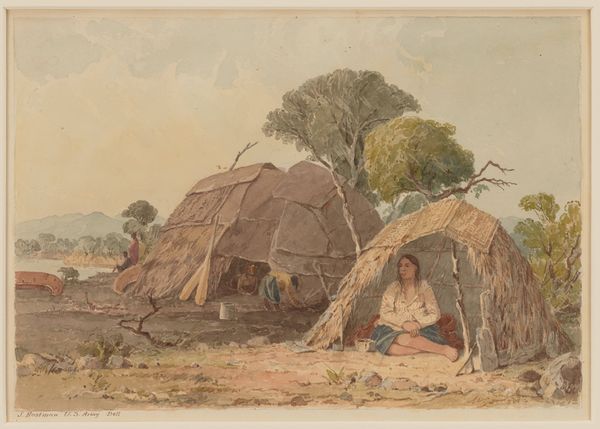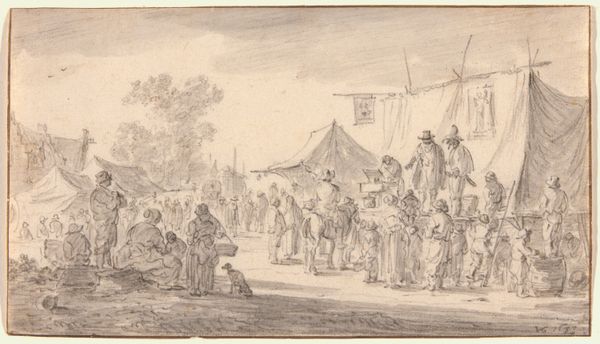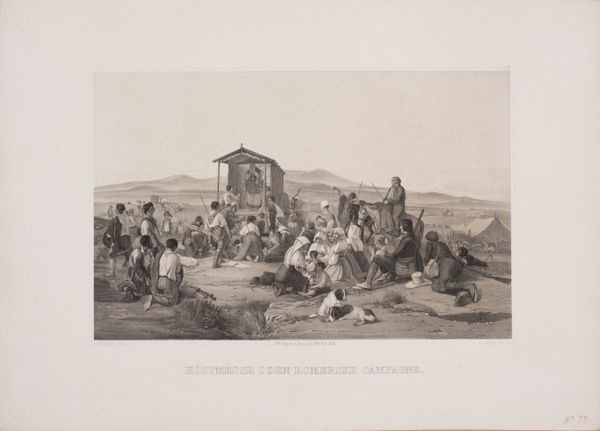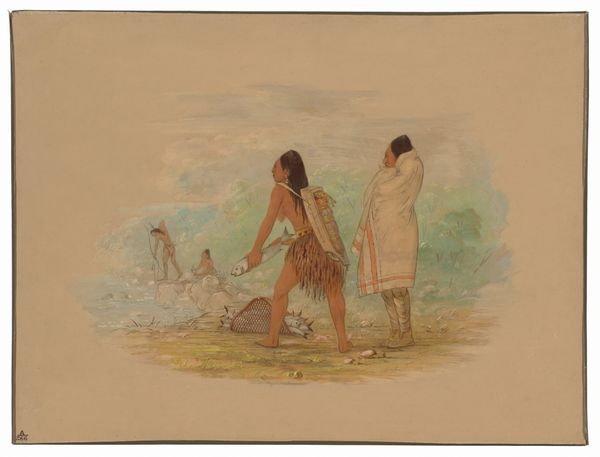
#
landscape
#
oil painting
#
coloured pencil
#
indigenous-americas
Dimensions: 8 5/16 × 10 15/16 in. (21.1 × 27.8 cm) (image)9 3/4 × 12 5/8 in. (24.8 × 32 cm) (sheet)17 9/16 × 21 1/2 × 1 1/8 in. (44.6 × 54.6 × 2.9 cm) (outer frame)
Copyright: Public Domain
Editor: This is "Indians in Council," a watercolor and graphite work by Seth Eastman from 1850. It's interesting; the painting depicts what seems to be a peaceful gathering. The use of light watercolor gives it a very serene, almost idyllic quality. How do you interpret the scene and its historical context? Curator: Eastman, as an army officer, had a unique position. While he participated in westward expansion, his artworks offer insights into Indigenous life, albeit often filtered through a colonial lens. We must consider his role in the very system that displaced these communities. Do you think the work is trying to be documentary or romanticizing? Editor: It’s hard to tell! I can see elements of both. The details of dress and the setting seem realistically portrayed, but the overall calm atmosphere feels idealized, right? Curator: Precisely. The image functions within a complex power dynamic. These depictions were consumed by a public shaping policy toward Indigenous populations. Think about how Eastman's role influenced the reception of the artwork. Editor: That's a really important point. So it’s not just about what’s *in* the painting, but also about who made it and *why*? Curator: Absolutely. And how that “why” then shapes public perceptions and narratives surrounding Native American communities. Understanding this image requires recognizing the complex politics of representation in the 19th century. It serves as both historical document and cultural artifact. Editor: That gives me a lot to think about! I never considered how deeply entangled the art is with the social and political landscape of the time. Curator: Indeed! The painting serves as a reminder to look critically at whose stories are being told and how they are being framed in visual culture.
Comments
minneapolisinstituteofart about 2 years ago
⋮
Seth Eastman may have used this picture-perfect chief and the council theme as an excuse to make candid portraits of these Dakota villagers. Many brought their long-stemmed pipes, signs of hospitality. The blue-and-white striped blanket worn by the figure seated below the person in orange (standing near the chief) could be a Hudson Bay blanket, underscoring the cosmopolitan exchange of goods that characterized the lives of Native people. Far from static or isolated, they benefited from lively trade routes that brought the world’s goods to their door. They also bent those goods to their own creative ends. The seated figure near the tipi’s flap showed his individualism by sticking feathers in the top of a fedora. This watercolor, one of 35 works on paper by Eastman in Mia’s collection, was the basis for an illustration in Henry Rowe Schoolcraft’s massive "Historical and Statistical Information Respecting the History, Condition, and Prospects of the Indian Tribes of the United States" (Philadelphia: Lippincott, Grambo & Co., 1851-57).
Join the conversation
Join millions of artists and users on Artera today and experience the ultimate creative platform.
